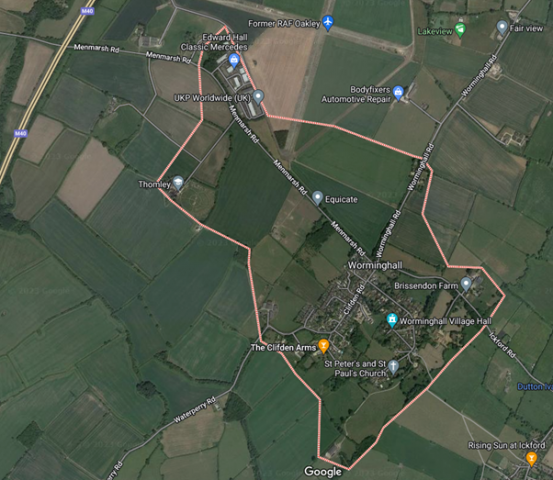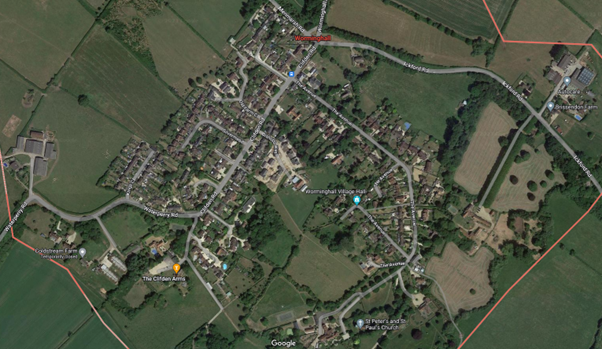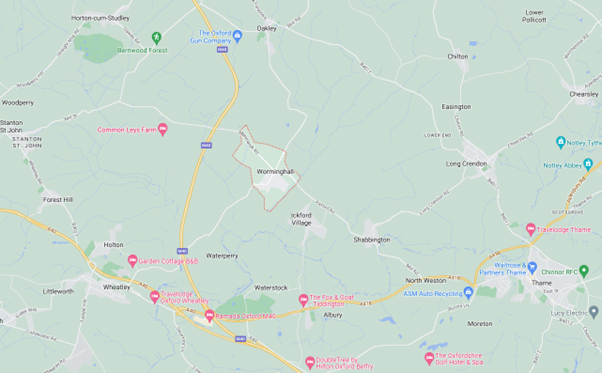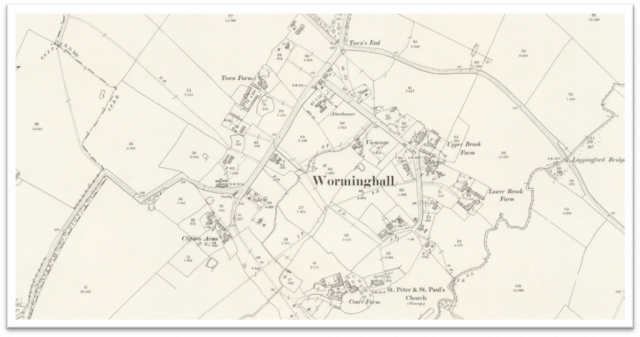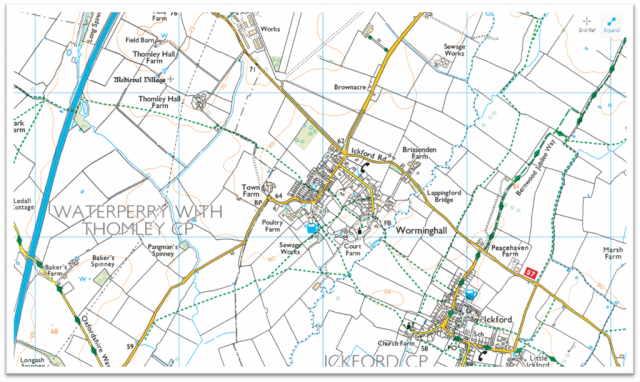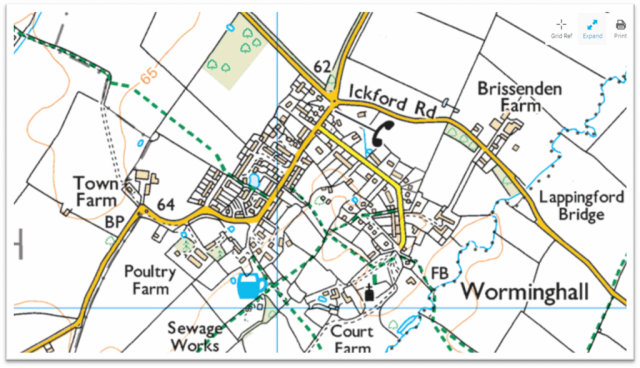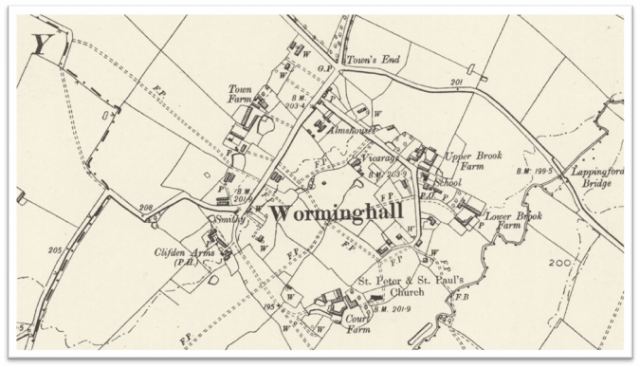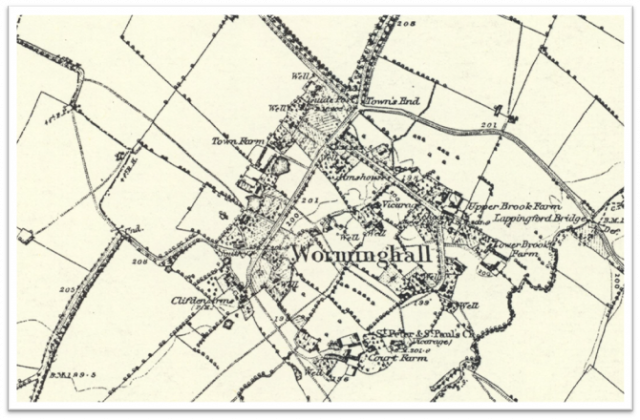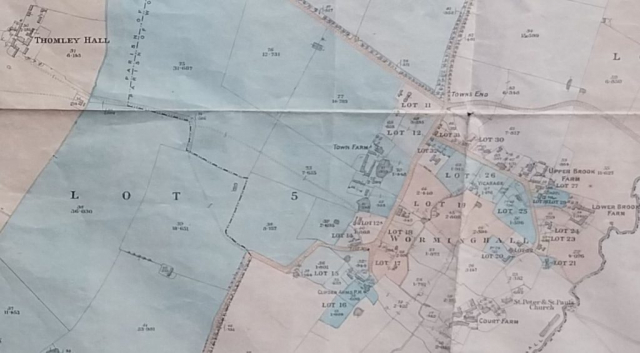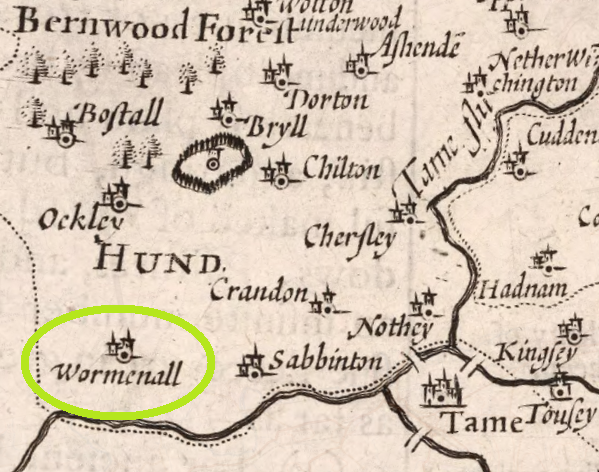
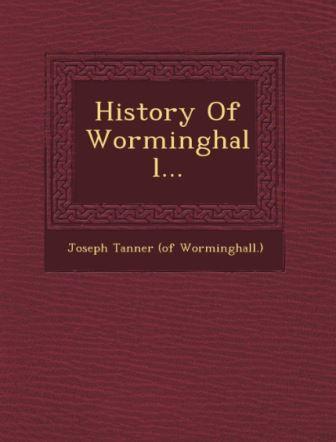
The derivation of the name Worminghall is very uncertain; it is variously spelt in old documents, being sometimes written as Wermlle, Wrmehale, Wormehale, Wormenhall, and Worminghall.
Colloquially speaking however, it is more often Wornal than Worminghall. Its history can be traced back in ancient documents to the early part of the eleventh century.
A.D. 1066 In the reign of Edward the Confessor, Eddeva, wife of Wlnuard, held this manor under Edith the Queen Consort.
A.D. 1084 At this time the Bishop of Constance held Wermelle – and the village is recorded as such in the Domesday Book – 1086.
A.D. 1100 After the forfeiture of the lands of the Bishop of Constance, this estate is said to have been given by Henry I to his natural son Robert Mellant.

A.D. 1315 The manor of Worminghall was held by John de la Rivere, who obtained a charter for a weekly market on Thursday, and annually on the feastday of Sts. Peter & Paul, June 29th, a fair & free warren.
A.D. 1670 John King founded an Almshouse charity in memory of his father Henry King (1592–1669) who was Bishop of Chichester and a poet. Built in 1675, restored in 1964,there are six almshouses, and they are a Grade II* listed building.
A.D. 1827 The estate of Worminghall was sold to the Hon Henry Lord Clifden, Baron Mendip. From him the property descended to his grandson Viscount Clifden son of Lord and Lady Dover. Under Lady Dover the whole manor was fenced, drained and new roads were made. A vicarage was also provided for a resident vicar; a farmhouse was converted into a school, later to become the Village Hall.
During WW2 RAF Oakley occupied much of the northern part of Worminghall parish from 1942 until 1945. Many of its buildings survive, and those on the south side of the airfield now form the nucleus of a trading estate. This is called Wornal Industrial Park, maintaining the traditional pronunciation and 18th century spelling of the toponym.
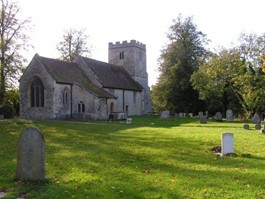
The Church of England parish church of Saints Peter and Paul is Norman, dating from 1150 and the north and south doorways survive from this time. The chancel was built or rebuilt in the 14th century and the bell tower was added in the 15th century. In 1847 the north wall was rebuilt and the present stained glass was inserted in the 15th century east window. The church is a Grade II* listed building.
The tower has a ring of three bells and there is also a Sanctus bell. John Taylor & Co recast all four bells in 1847 at the foundry they had at the time in Oxford.
Saints Peter and Paul’s is now part of the Benefice of Worminghall with Ickford, Oakley and Shabbington.
In 1722, the number of inhabitants was 259, comprised in forty-five families. In 1821, the inhabitants had increased only to 314, the 2011 census recorded 534.
More information:
British History on Worminghall
Oakley Airfield Pictures and Plan
Oakley Airfield, Bucks Monument Record
Oakley Airfield, Bucks Archeology
Planned development of the Airfield, apparently stalled (as at May ’23)
Deserted medieval village of Thomley – History B Holden
Deserted medieval village of Thomley – geophysical survey 1997
Archaeological Report on Development of the Old Rectory, Worminghall
The Royal Hunting Forest of Bernwood (Wikipedia)
Genealogy Records (includes old maps)

